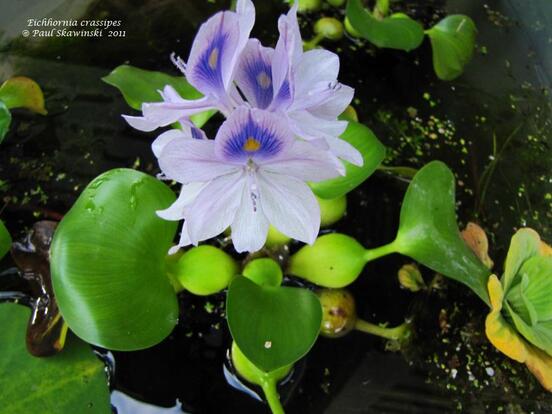|
Guest Post by Melinda Myers Spring is a favorite time in the garden. Everyday something new sprouts through the ground, blooms appear, and leaves begin filling empty branches. As you enjoy spring and summer unfolding, keep a lookout for unwelcome plants in gardens, waterways, and natural areas. The more people watching for and helping to manage invasive plants the better chance we have for controlling these invasive plants. As active gardeners and influencers in the gardening world, we need your help not only monitoring and controlling invasive species but also informing others about this problem. The Wisconsin Invasive Species Calendar from the University of Wisconsin-Madison First Detector Network is a helpful tool alerting us to the appearance of various unwanted plants. Just click on the calendar to enlarge. This timely reminder can help us watch for, manage, and report invasive plants earlier in the season. Knowing when these plants emerge also narrows down the list of possible plants, helping with identification. Use this calendar, the links to Invasive Plant factsheets and videos on the right-hand column of the webpage and the invasive plant profiles on the Wisconsin Department of Natural Resources (DNR) website for more information on identification and control of aquatic and terrestrial invasive plants.
As you hike, bike, or visit parks, green spaces, and natural areas this year, report invasive plant infestations to the Wisconsin DNR. If you think you have found a prohibited species, even on your own property, it’s especially important to report it to help DNR understand the overall spread of the plants and they can sometimes help with managing it. Visit their web page for tips on documenting what you have found, reporting invasives, and the links to other resources. Provide photos and specific locations using GPS points, street addresses or road crossings. Expand your efforts and be a part of the Citizen Science based Wisconsin First Detector program. You’ll find helpful information in the Wisconsin First Detector and Dane County Parks Handbook on Monitoring Invasive Plants in Wisconsin. Here are a few of the top aquatic invasive plants to watch for and remove on your property. Please watch for and report infestations of these and other invasive species in your landscape and other spaces. Lesser Celandine This plant’s bright yellow flowers in April and May are often mistaken for our native marsh marigold. The plant spreads rapidly, crowding out nearby native plants but the leaves die back mid-season, resulting in soil erosion. Yellow Iris A beautiful, but invasive plant that easily spreads by seeds floating in water, rhizomes, and floating mats, infesting areas beyond the garden where they were planted. Watch for yellow flowers in May and June and strappy leaves throughout the growing season. Yellow Floating Heart This plant has yellow waterlily-like flowers held above heart-shaped leaves in May through October. This water plant forms dense patches that exclude native species and creates stagnant areas with low oxygen levels. Water Hyacinth Water hyacinth forms a dense mat of leaves over the water surface, making boating, fishing, and other water activities difficult. Its presence also degrades water quality. Watch for circular leaves to begin appearing in May and lavender blue flowers from June to September. Purple Loosestrife This plant seemed to have a banner year in 2021. It invades wetlands, disrupting the habitat and crowding out native plants that birds, insects, and waterfowl depend upon for food and shelter. Many homeowners spraying for mosquitoes may be inadvertently killing the beetles that are being used to manage this plant. Watch for the spikes of purplish pink flowers that open from the bottom up in July through September. Japanese Knotweed Look for the bamboo-like stems and plumes of creamy flowers that appear in September. It quickly spreads, creating an impenetrable thicket in gardens, natural spaces, and shorelines. Water Lettuce As its name implies, this plant resembles lettuce. The leaves appear from June through October and can form a dense covering, degrading water quality and reducing habitat diversity. These plants and other aquatic invasive plants are covered in the Top Invasive Plants to Avoid video. You’ll find recommendations on good plants to include and those to avoid in the “Top Plants for Rain Gardens, Water Gardens & Shoreline Plantings and Those to Avoid” webinar available on demand. To watch it, click here & enter passcode: &xe9hPU^ You can also download the webinar handout. Thanks for helping us spread the word. Together we can make a difference!
1 Comment
Jessica Crane
4/15/2022 09:53:28 am
This was a fantastic article for the upcoming Spring awareness of our great NW Wisconsin woods and waterways.
Reply
Leave a Reply. |
|
| North Country MGV | gARDEN bLOGS |
Location |
|

 RSS Feed
RSS Feed